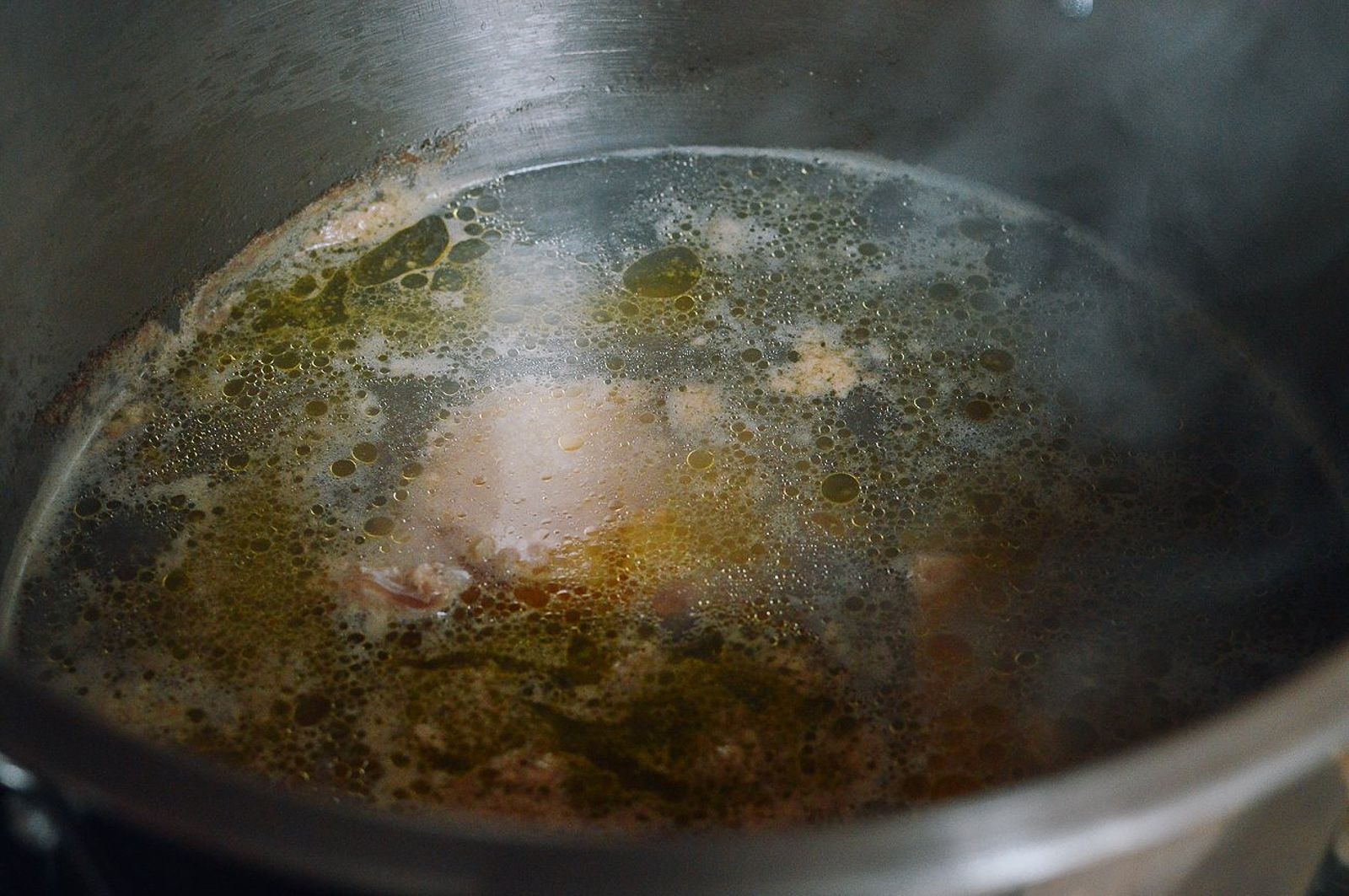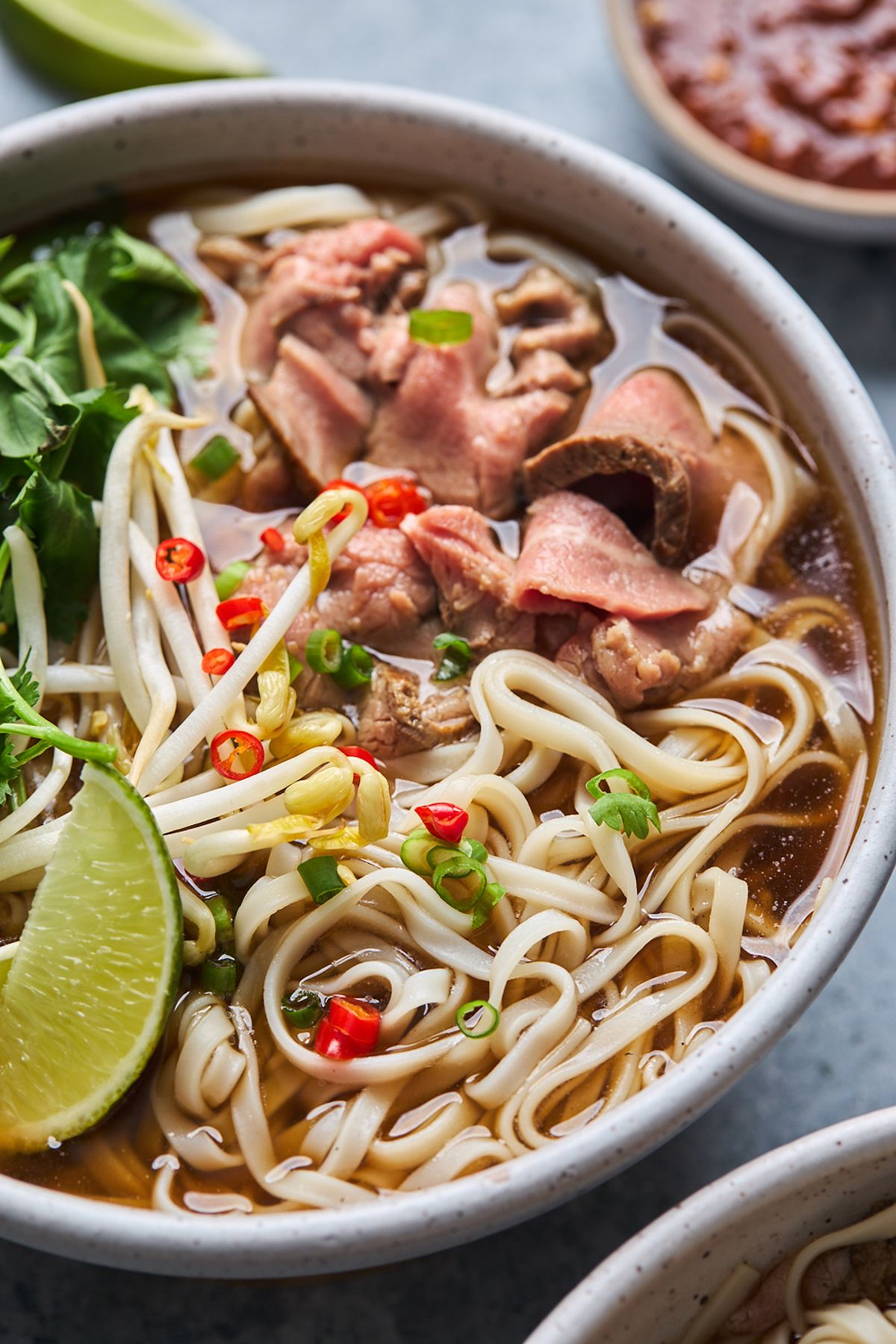As an avid foodie, I’ve always been captivated by the rich tapestry of flavors that make up Vietnamese cuisine, and none more so than the beloved Pho Bo – the quintessential Vietnamese beef noodle soup. The mere thought of it conjures images of a steaming bowl brimming with tender slices of beef, chewy rice noodles, and a broth that sings with a symphony of spices. It’s a dish that has the power to transport you to the bustling streets of Hanoi, where the aroma of pho wafts through the air, beckoning passersby to indulge in its comforting embrace.
For years, I’ve been on a quest to uncover the secrets behind this iconic dish, determined to master the art of pho-making in my own kitchen. Through countless experiments and a deep dive into Vietnamese culinary traditions, I’ve finally cracked the code, and I’m thrilled to share my findings with you. In this article, we’ll explore the nuances of Vietnamese beef noodle soup pho bo, from the essential components that make it so irresistible to a step-by-step guide that will have you crafting restaurant-worthy bowls in no time.
Unlocking the Essence of Pho Bo
At the heart of a sublime Pho Bo lies the broth – a complex elixir that requires careful attention and a few key techniques to achieve its full potential. While traditional recipes often call for hours of simmering, I’ve developed a simplified approach that delivers the same depth of flavor without the extensive time commitment.
The Broth: The Foundation of Pho
The secret to a truly memorable pho broth lies in a few essential steps. First, we’ll pre-boil the beef bones and meat to remove any impurities, ensuring a clean, clear foundation. Next, we’ll char the onions and ginger, a step that adds a subtle smoky depth to the broth. Toasting the star anise, cinnamon, cloves, and other spices in a dry pan will further enhance their essential oils, amplifying the overall aroma and flavor.
But the true magic, as I’ve discovered, lies in the generous use of fish sauce. While it may seem counterintuitive, this umami-rich ingredient provides the perfect balance of saltiness, allowing us to skip the traditional addition of salt altogether. After these preparatory steps, the broth simmers for a relatively short 4-5 hours, merging the flavors into a harmonious symphony that will have your taste buds dancing with delight.
Crafting the Perfect Vietnamese Beef Noodle Soup Pho Bo: A Step-by-Step Guide
Now that we’ve unlocked the secrets to a delectable pho broth, let’s dive into the step-by-step process of creating your own Vietnamese beef noodle soup masterpiece. Grab your apron and let’s get started!
Ingredients:
- 2 3-inch pieces of ginger, cut in half lengthwise
- 2 onions, peeled
- 5 pounds beef marrow or knuckle bones
- 2 pounds beef chuck, cut into 2 pieces
- 5 quarts water
- 2 scallions, cut into 4-inch lengths
- 1/3 cup fish sauce
- 2 1/2 ounces rock sugar (or 2 1/2 tablespoons granulated sugar)
- 8 star anise
- 6 cloves
- 1 cinnamon stick
- 1 black cardamom pod (optional)
- 2 teaspoons fennel seeds
- 2 teaspoons coriander seeds
- 1 tablespoon salt
- 1 pound dried pho noodles
- 1/3 pound beef sirloin, slightly frozen and thinly sliced against the grain
Instructions:
- Pre-Boil the Bones and Meat: Begin by placing the beef bones and chuck in a large stockpot and covering them with water. Bring the water to a boil and let it simmer for 5 minutes. This helps to remove any impurities that could cloud the final broth. Drain the bones and meat in a colander, and thoroughly clean the stockpot.
- Char the Aromatics : Using tongs, hold the ginger and onions (one at a time) over an open flame or gas burner, turning them until they’re lightly charred and fragrant, about 5 minutes. Rinse away any blackened skins.

- Build the Broth: Add 5 quarts of fresh water to the cleaned stockpot and bring it to a boil. Transfer the bones, meat, charred ginger, and onions back to the pot. Add the scallions, fish sauce, and sugar. Reduce the heat to low and simmer for 40 minutes, skimming off any foam or fat that rises to the surface.
- Prepare the Beef: Remove one piece of the beef chuck and transfer it to a bowl of ice water to stop the cooking process. Then, transfer this piece of beef to a container and refrigerate. This will be sliced and added to the pho later.
- Toast the Spices: In a dry pan over medium-low heat, toast the star anise, cloves, cinnamon stick, cardamom (if using), fennel seeds, and coriander seeds for about 3 minutes, until fragrant. Tie the spices in a cheesecloth and add it to the simmering broth.
- Final Simmering : Cover the pot and continue simmering for 4 more hours, skimming as necessary. Add the salt and adjust the seasoning with more fish sauce or sugar as needed.

- Assemble the Pho : Cook the pho noodles according to the package instructions. Divide the noodles among serving bowls and top with slices of the reserved beef chuck and the raw beef sirloin. Bring the broth to a rolling boil and ladle it into the bowls. The hot broth will cook the raw beef sirloin.

- Garnish and Serve : Garnish the pho with your desired toppings, such as sliced chili, onion, scallions, cilantro, bean sprouts, and Thai basil. Serve with lime wedges, and offer hoisin sauce and Sriracha on the side for those who want to customize their pho.

Mastering the Art of Pho: Personalize Your Bowl
The beauty of Pho Bo lies in the array of fresh garnishes that allow you to personalize your bowl. Classic toppings like bean sprouts, basil, cilantro, lime wedges, and thinly sliced chili peppers can transform the dish, while optional extras like hoisin sauce and Sriracha offer the opportunity to customize the flavor to your liking.
Pho Ahead: Streamlining Weeknight Meals
For the busy home cook, I have good news – you can easily prepare certain elements of the pho in advance to save time on those hectic weeknights. The broth can be made ahead and stored in the refrigerator for up to 4 days or frozen for 3-4 months. The cooked noodles can be tossed with a bit of oil and kept in the fridge for up to 1 day, while the pre-cooked beef can be sliced and refrigerated for several hours.
Exploring Pho Variations: A World of Flavors
While this recipe focuses on the classic Vietnamese beef noodle soup, Pho Bo offers a versatile canvas for experimentation. You can try variations with chicken (Pho Ga) or even vegetarian options by swapping the beef broth for a flavorful vegetable-based alternative. For a bolder flavor profile, you can also explore spicy pho versions by incorporating more chili peppers and other aromatic spices.
FAQ
Q: Can I use pre-made broth for pho?
A: Yes, you can use pre-made beef broth for a quicker option. However, for the most authentic flavor, making your own broth is highly recommended.
Q: What type of rice noodles should I use for pho?
A: Use flat rice noodles specifically designed for pho. They are readily available at most Asian grocery stores.
Q: How long can I store leftover pho?
A: Store leftover pho in the refrigerator for up to 3 days. It’s best to store the broth, noodles, and toppings separately to prevent the noodles from becoming soggy.
Unlocking the Secrets of Pho Bo
As I’ve discovered on my culinary journey, the secrets to crafting a truly exceptional Pho Bo lie in a few key techniques and a deep appreciation for the flavors of Vietnamese cuisine. By following this simplified approach, you can now enjoy the rich, aromatic delights of this beloved dish in the comfort of your own home, no matter how busy your weeknights may be.
So, gather your ingredients, don your apron, and embark on a delicious adventure to explore the depths of Pho Bo. Whether you’re craving a comforting bowl on a chilly evening or seeking a quick and satisfying weeknight meal, this easy pho recipe is sure to become a cherished part of your culinary repertoire. Embrace the process, savor the flavors, and let the warmth of this Vietnamese classic transport you to the bustling streets of Hanoi, one spoonful at a time.


